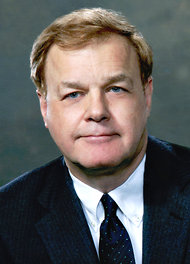 Marian GoldmanJames W. Giddens, the trustee liquidating MF Global.
Marian GoldmanJames W. Giddens, the trustee liquidating MF Global.
The trustee liquidating MF Global’s brokerage unit has spotted suspicious trades in customer accounts that appear connected to a $1.2 billion shortfall, the trustee’s lawyer said Friday.
The lawyer, James Kobak, said at a hearing in Federal Bankruptcy Court in Manhattan that most of the transactions appeared to have taken place close to the weekend before MF Global filed for bankruptcy.
Separately, the bankruptcy judge overseeing the case, Martin Glenn, approved a request by the trustee to pay out up to $2.2 billion to MF Global brokerage customers. The move by the trustee, James W. Giddens, would represent the return of about 72 percent of the fallen firm’s customer accounts.
The update by Mr. Giddens’s lawyer, Mr. Kobak, comes amid continuing investigations into the demise of MF Global. In his first public appearance since the bankruptcy filing, Jon S. Corzine, MF Global’s former chief executive, testified at a Congressional hearing on Thursday that he did not know what lay behind the customer fund shortfall.
The discovery of the missing money scuttled an effort by MF Global to sell itself, leading to its bankruptcy filing on Oct. 31. Investigators, including the Federal Bureau of Investigation, have been combing through the firm’s books since then, trying to determine if money was improperly moved out of the firm.
At the House Agriculture Committee’s hearing, Mr. Corzine said only that he was “stunned” by the discovery of the shortfall and that he “never intended to break any rules.” He has not been accused of wrongdoing.
In his update, Mr. Kobak declined to elaborate on the suspicious trades or whether criminal activity was involved. He said the shortfall might exceed $1.2 billion, out of an estimated $5.8 billion in total customer funds.
A spokesman for Mr. Giddens said in a statement after the hearing, “The full amount of any shortfall will not be known with certainty until the claims process is completed.” Some of the unaccounted-for money may lie in MF Global’s foreign subsidiaries, which are under the control of court-appointed trustees in other countries. Mr. Giddens’s office estimates that MF Global’s American brokerage customers are owed about $857 million held abroad, while the American brokerage unit may owe about $253 million.
Mr. Giddens and the other trustees are in negotiations to return at least some of that money.
The distribution approved on Friday is the single-biggest return of MF Global customer money to date. Two earlier distributions returned about $2 billion in client funds. A spokesman for Mr. Giddens said that the bulk of the money would be distributed within days, and the remainder within two to four weeks.
Its approval came despite objections from the firm’s creditors and from customers who have not yet received any distributions of funds. Each group argues that these interim payouts would ultimately reduce the amount of money available to them.
But Judge Glenn, who in court hearings has repeatedly cited the high volume of calls from MF Global customers, said that such concerns would be dealt with in the final claims process. Mr. Giddens has set aside about $1 billion for remaining claims, though that amount could grow as additional money is recovered.
Also on Friday, Mr. Giddens’s office won court approval to transfer about 330 additional MF Global securities accounts to another brokerage firm.
Article source: http://feeds.nytimes.com/click.phdo?i=42a5b8e9ec1462d4bf18a376fb2990b7
